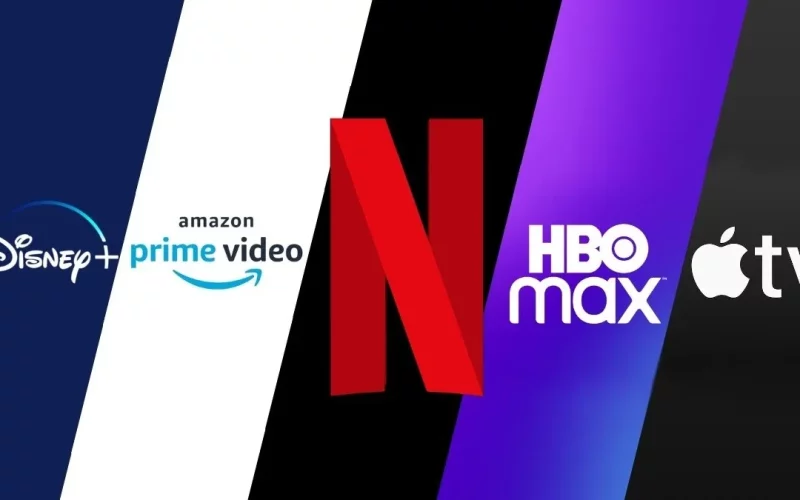Introduction
As the entertainment industry continues to evolve, filmmakers are increasingly turning to streaming platforms to distribute and sell their films. With the shift from traditional theatrical releases to digital platforms, filmmakers now have more opportunities than ever to reach global audiences. However, with so many platforms available, it’s essential to understand which options are best suited for selling your film. This article will guide you through the top streaming platforms where you can sell your film and reach your target audience.
Understanding the Shift to Streaming
In recent years, streaming services have revolutionized the way we consume media. With the growing preference for on-demand viewing and the convenience of watching films from home, streaming platforms have become the go-to option for filmmakers. Traditional distribution models often required large budgets and connections with distributors. Streaming platforms, on the other hand, provide a more accessible avenue for independent filmmakers to showcase their work.
The Rise of Streaming Platforms for Filmmakers
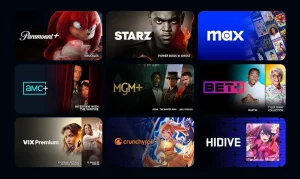
Streaming platforms have experienced a meteoric rise in recent years, reshaping the way films are distributed and consumed. With the decline of traditional movie theaters and physical media, streaming services like Netflix, Amazon Prime, and Apple TV have become the dominant force in film distribution.
These platforms provide filmmakers with unprecedented access to global audiences, bypassing the need for major distribution deals. Independent filmmakers, in particular, have benefited from the democratization of film distribution, as they can now sell and market their films directly to consumers without the need for large budgets.
Benefits of Streaming Platforms for Filmmakers
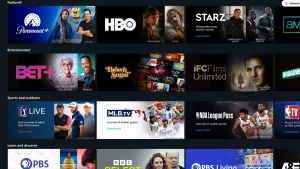
- Global Reach: Streaming platforms provide instant access to international audiences, expanding the reach of your film beyond local markets.
- Cost-Effective: Traditional distribution can be costly, with expenses tied to marketing and physical copies. Streaming reduces these costs.
- Data and Analytics: Filmmakers can access valuable viewership data, helping them understand their audience and refine future projects.
- Creative Control: Unlike traditional distribution deals, streaming platforms often allow filmmakers to retain creative control and ownership of their films.
Top Streaming Platforms to Sell Your Film
Let’s explore some of the best streaming platforms where filmmakers can sell their films. Each platform offers unique advantages, so it’s essential to choose the one that aligns with your goals.
1. Amazon Prime Video

Amazon Prime Video is one of the largest streaming platforms globally, offering filmmakers an opportunity to sell or rent their films through Amazon’s Video Direct program.
Key Features:
- Global Audience: Access to millions of Prime Video subscribers worldwide.
- Flexible Revenue Options: Filmmakers can choose between rentals, purchases, or earning revenue through Prime Video subscription views.
- Royalties: Amazon pays filmmakers based on the number of hours their film is streamed.
- Ease of Distribution: Simple to upload your film and manage distribution directly.
Drawbacks: High competition and the potential for lower earnings if your film does not attract significant viewership.
2. iTunes (Apple TV)

Apple’s iTunes, now integrated into Apple TV, remains a popular option for filmmakers looking to sell or rent their films.
Key Features:
- High-Quality Standards: Apple TV ensures that films are presented in the highest possible quality, making it appealing to filmmakers who want a premium viewing experience.
- Global Reach: With millions of Apple users, filmmakers can tap into a large and engaged audience.
- Revenue Options: Offers filmmakers the chance to sell or rent their films.
Drawbacks: Requires an aggregator for submission, which can add additional costs.
3. Netflix

Netflix is one of the most popular platforms worldwide, known for its massive subscriber base and original content. However, it’s not the easiest platform to sell your film on.
Key Features:
- Large Audience: With over 200 million subscribers, your film can gain massive exposure.
- High-Quality Productions: Netflix has a reputation for curating high-quality content, which can elevate the visibility of your film.
Drawbacks: Netflix typically buys distribution rights rather than offering direct sales or rentals, making it harder for independent filmmakers to get their films accepted.
4. Vimeo On Demand
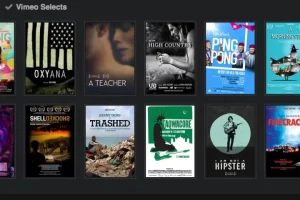
Vimeo On Demand is a popular platform for independent filmmakers looking to sell their films directly to consumers.
Key Features:
- Full Control: Vimeo allows filmmakers to set their prices and earn revenue from rentals or purchases.
- Customization: Filmmakers have control over how their film is presented, from trailers to bonus features.
- Revenue: Vimeo takes a small commission, allowing filmmakers to keep most of their earnings.
Drawbacks: Vimeo has a smaller audience compared to giants like Netflix or Amazon, which might limit exposure.
5. FilmHub

FilmHub is a platform designed to help filmmakers get their work distributed across multiple streaming services.
Key Features:
- Wide Distribution: FilmHub partners with many streaming services, giving your film the chance to be seen on various platforms.
- No Upfront Costs: Filmmakers pay a commission based on earnings, making it accessible for those with limited budgets.
- Access to Niche Markets: FilmHub caters to more niche audiences, which could help your film stand out.
Drawbacks: Less control over where your film is placed.
6. YouTube

YouTube offers filmmakers a versatile platform to monetize their content through ads, rentals, or purchases.
Key Features:
- Massive Global Audience: YouTube is the world’s largest video-sharing platform, giving your film the potential to reach millions.
- Monetization Options: You can earn revenue through ads or charge for rentals and purchases.
- Easy to Upload: Uploading films to YouTube is quick and straightforward.
Drawbacks: Revenue from ads can be lower than sales or rentals, and your film may get lost in the vast amount of content on the platform.
7. Hulu

Hulu is a leading streaming service in the United States known for its focus on current television shows and a growing library of films. It’s an attractive platform for filmmakers targeting the US market.
Selling Your Film
Hulu typically acquires films through partnerships with distributors and production companies. Building relationships with these intermediaries can increase your chances of getting your film on Hulu.
Key Features:
- Targeted Audience: Strong presence in the U.S. market.
- Content Variety: Diverse range of genres and styles.
- Advertising Opportunities: Option for ad-supported viewing.
Challenges Filmmakers Face with Streaming Platforms
While streaming platforms offer numerous benefits, they also come with a set of challenges for filmmakers. One of the biggest hurdles is the highly competitive nature of these platforms. With thousands of films being added to platforms like Amazon Prime and Netflix each year, standing out in a crowded marketplace is difficult.
Filmmakers must invest in marketing and promotional strategies to ensure their films reach the right audience. Additionally, some platforms, such as Netflix, prefer to acquire full rights to films, limiting filmmakers’ control over their content and potentially restricting future revenue streams. The submission process can also be complex, requiring filmmakers to navigate various rules, formats, and licensing requirements.
The Future of Streaming Platforms for Selling Films
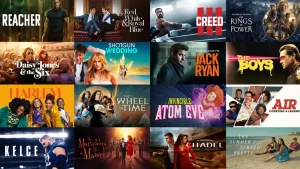
The future of selling films through streaming platforms looks promising as technology continues to evolve and audiences increasingly favor on-demand content. Innovations like artificial intelligence and personalized content recommendation algorithms will likely play a significant role in enhancing viewership and boosting the discoverability of independent films.
Furthermore, the emergence of niche streaming platforms dedicated to specific genres or types of content will offer filmmakers more targeted audiences, allowing for better engagement and financial returns. As the industry matures, filmmakers will need to adapt to these trends and seize new opportunities in the ever-evolving streaming landscape.
Analysis of Key Streaming Platforms
| Platform | Global Reach | Revenue Options | Creative Control | Ease of Use | Drawbacks |
|---|---|---|---|---|---|
| Amazon Prime | High | Rentals, Purchases, SVOD | Moderate | High | High competition, lower potential earnings |
| iTunes (Apple TV) | High | Rentals, Purchases | High | Moderate | Requires aggregator, additional costs |
| Netflix | Very High | Licensing Deals | Low | Low | Hard to get accepted, no direct sales |
| Vimeo On Demand | Moderate | Rentals, Purchases | Very High | High | Smaller audience, lower exposure |
| FilmHub | Moderate | Licensing Deals | Moderate | High | Less control over distribution |
| YouTube | Very High | Ads, Rentals, Purchases | High | Very High | Lower ad revenue, oversaturated platform |
Comparative Table of Streaming Platforms
| Feature | Amazon Prime | iTunes (Apple TV) | Netflix | Vimeo On Demand | FilmHub | YouTube |
|---|---|---|---|---|---|---|
| Audience Size | Large | Large | Very Large | Moderate | Moderate | Very Large |
| Revenue Model | Rentals, SVOD | Rentals, Sales | Licensing | Rentals, Sales | Licensing | Ads, Rentals, Sales |
| Creative Control | Moderate | High | Low | Very High | Moderate | High |
| Cost to Enter | Low | High | High | Low | Low | Very Low |
| Film Type | Indie, Studio | Premium, Indie | Studio, Original | Indie | Indie | All Types |
Conclusion
Choosing the right streaming platform to sell your film depends on your goals, audience, and budget. Platforms like Amazon Prime Video and iTunes offer broad exposure but may come with higher competition and submission costs. On the other hand, Vimeo On Demand and FilmHub offer more control and flexibility for independent filmmakers. Whichever platform you choose, the shift to streaming is a game-changer for filmmakers, providing unprecedented opportunities to reach global audiences.






